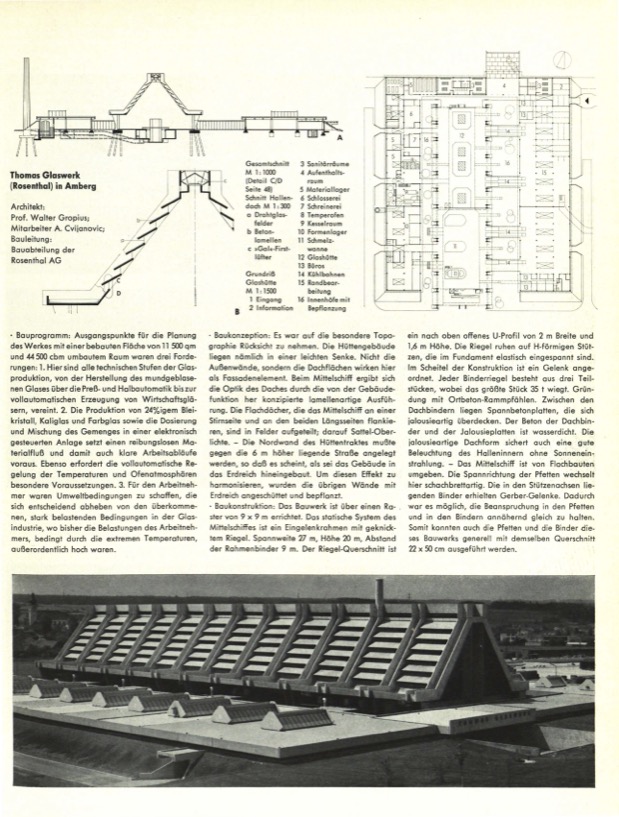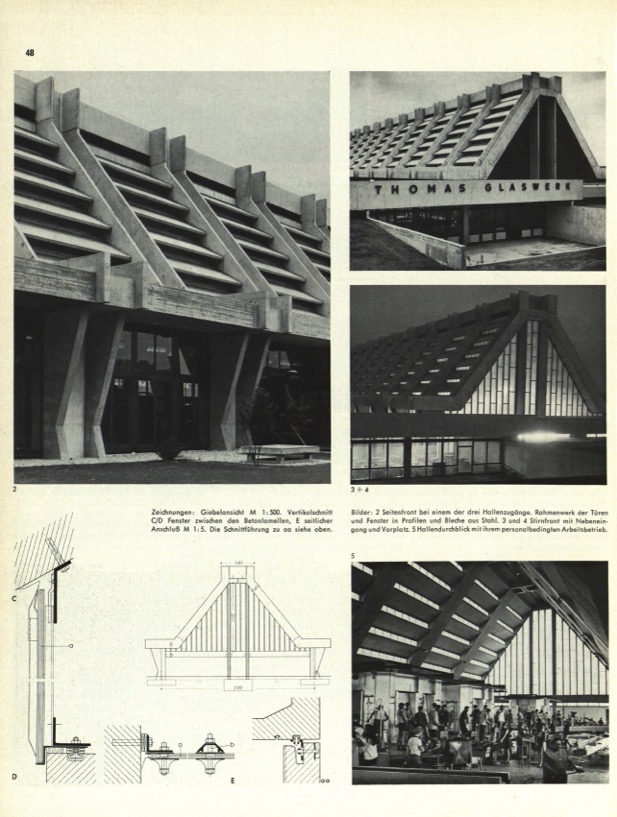Industrial Cathedral: Thomas Glassworks by Walter Gropius in Amberg (1971)

Of the grand masters of Modernism, Walter Gropius undoubtedly created the most heterogeneous body of work in quality terms. Outstanding achievements such as the Fagus Works in Alfeld (1911) and the Bauhaus building in Dessau (1926) were accompanied by much mediocrity – particularly in the field of urban planning, where Gropius found the pure doctrine of linear block buildings more important than functioning urban spaces.
Architectural exclamation mark
With the Thomas Glassworks in Amberg, Gropius once again set an architectural exclamation mark, this time in his declining years. The client was Rosenthal AG, for which the Bauhaus founder and his office The Architects‘ Collaborative (TAC) had completed a porcelain factory in Selb three years previously. However, it is open to question how much Gropius is really in the Amberg hall building: having founded TAC together with a number of equal partners in late 1945, the former Harvard professor spent much of his time in the ensuing years on travelling to garner new business and accepting awards for his life’s work.
Glass cathedral with chimney effect
After its completion in 1970 – one year after Gropius’ death – the building soon came to be referred to as the glass cathedral in common parlance. This was mainly due to its 20-metre-high and some 100-metre-long interior, designed to create a chimney effect above the glass furnaces, since although glass production had long been automated in the 1960s, it still produced a great deal of heat.
The roof, borne by pairs of reinforced concrete columns set 9 metres apart and joined by slat-like prestressed concrete slabs, is more than just a “fifth façade”. Rather it is what makes the building set in a depression on the town’s outskirts instantly recognisable. Of the hall’s four external faces, only the glazed front gable is really worthy of mention. The building is surrounded on all sides by flat, single-storey side wings that practically disappear behind artificial banks of earth. Structurally the roof trusses consist of frames with a single hinge at the roof ridge and clamped at the base points.
Production still continues in the glass cathedral, which today operates as Kristall-Glasfabrik Amberg, and which can be visited in guided tours. For more information, see Stadtmuseum Amberg.



